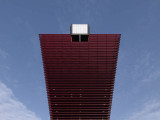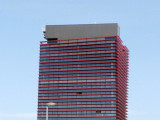Net Center
Padova
- Facts
-
Metrics
You must be a CTBUH Member to view this resource.
Official Name
Net Center
Type
Building
Status
Completed
Completion
2010
Country
City
Address
Function
A mixed-use tall building contains two or more functions (or uses), where each of the functions occupy a significant proportion of the tower's total space. Support areas such as car parks and mechanical plant space do not constitute mixed-use functions. Functions are denoted on CTBUH "Tallest Building" lists in descending order, e.g., "hotel/office" indicates hotel function above office function.
Office / Hotel
Structural Material
Both the main vertical/lateral structural elements and the floor spanning systems are constructed from steel. Note that a building of steel construction with a floor system of concrete planks or concrete slab on top of steel beams is still considered an “all-steel” structure as the concrete elements are not acting as the primary structure.
All-Concrete
Both the main vertical/lateral structural elements and the floor spanning systems are constructed from concrete which has been cast in place and utilizes steel reinforcement bars and/or steel reinforced concrete which has been precast as individual components and assembled together on-site.
All-Timber
Both the main vertical/lateral structural elements and the floor spanning systems are constructed from timber. An all-timber structure may include the use of localized non-timber connections between timber elements. Note that a building of timber construction with a floor system of concrete planks or concrete slab on top of timber beams is still considered an “all-timber” structure as the concrete elements are not acting as the primary structure.
Mixed-Structure
Utilizes distinct systems (e.g. all-steel, all-concrete, all-timber), one on top of the other. For example, a Steel Over Concrete indicates an all-steel structural system located on top of an all-concrete structural system, with the opposite true of Concrete Over Steel.
Composite
A combination of materials (e.g. steel, concrete, timber) are used together in the main structural elements. Examples include buildings which utilize: steel columns with a floor system of reinforced concrete beams; a steel frame system with a concrete core; concrete-encased steel columns; concrete-filled steel tubes; etc. Where known, the CTBUH database breaks out the materials used within a composite building’s primary structural elements.
All-Concrete
Height
79.9 m / 262 ft
Floors Above Ground
20
Floors Below Ground
2
# of Hotel Rooms
153
# of Parking Spaces
1100
# of Elevators
7
Rankings
-
By function
You must be a CTBUH Member to view this resource.
-
By material
You must be a CTBUH Member to view this resource.
Construction Schedule
Proposed
Construction Start
Completed
You must be a CTBUH Member to view this resource.
Developer
Progetto Acciaio S.r.l
Architect
Usually involved in the front end design, with a "typical" condition being that of a leadership role through either Schematic Design or Design Development, and then a monitoring role through the CD and CA phases.
LVL Architettura
Structural Engineer
The Design Engineer is usually involved in the front end design, typically taking the leadership role in the Schematic Design and Design Development, and then a monitoring role through the CD and CA phases.
Società Italiana di Ingegneria e Servizi S.r.l
MEP Engineer
The Design Engineer is usually involved in the front end design, typically taking the leadership role in the Schematic Design and Design Development, and then a monitoring role through the CD and CA phases.
Studio De Zolt
Project Manager
The CTBUH lists a project manager when a specific firm has been commissioned to oversee this aspect of a tall building’s design/construction. When the project management efforts are handled by the developer, main contract, or architect, this field will be omitted.
The CTBUH lists a project manager when a specific firm has been commissioned to oversee this aspect of a tall building’s design/construction. When the project management efforts are handled by the developer, main contract, or architect, this field will be omitted.
Edilbasso
Contractor
The main contractor is the supervisory contractor of all construction work on a project, management of sub-contractors and vendors, etc. May be referred to as "Construction Manager," however, for consistency CTBUH uses the term "Main Contractor" exclusively.
Edilbasso S.p.a.
Other Consultant
Other Consultant refers to other organizations which provided significant consultation services for a building project (e.g. wind consultants, environmental consultants, fire and life safety consultants, etc).
Other Consultant refers to other organizations which provided significant consultation services for a building project (e.g. wind consultants, environmental consultants, fire and life safety consultants, etc).
Sicurtecno
CTBUH Awards & Distinctions
Best Tall Building, by Region, Europe 2011 Award of Excellence
2011 CTBUH Awards
About Net Center
Net Center is located in an outskirt region to the eastern side of the main town, serving to anchor a new urban district called San Lazzaro. The design of the tower aimed to create a landmark for the larger surrounding territory and bring interest to the entire complex and region. It is an attempt to give these suburban places the same quality of the historic centers of the main towns through urban design and strong architectural expression. An important element of the complex is the public square on which the tower sits, creating a key urban space for the public.
The lower floor plans of the tower are trapezoids with the shorter sides facing the street; the plans change at every level, eventually becoming a rectangle at the 10th floor. Rising up towards the top the plans become opposite trapezoids with the shorter sides facing the public square. Thus, on the eastern and western façades a curved surface is generated from the straight lines. These horizontal straight lines are expressed in the red aluminum sunscreens. The steel structure is supported by eight round columns in plan, four of which are inclined to follow the changing form.
Net Center rests on a 15,000 sq m (161,458 sq ft) wide rectangular slab, raised 1.5 meters (5 feet) from the ground, for pedestrian use only, while cars are parked underneath it. The slab is covered in black slate, extended inside all the ground floors of the buildings to lend an internal/external permeability. There is a sequential system of urban areas: the long gallery is connected to the big square and a smaller future square (in the north) with services for inhabitants in the neighborhood (shops, pharmacy, weekly market, and so on). In this system the red tower marks the presence of the public square and it faces the main street to attract interest and to leave the square open to the neighborhood in the north.
In this building solar protection in the form of the shading elements has become the key element in the tower’s primary architectural expression. The horizontal red grids (of which there are three for every floor) give the building its red twisting and curved shape (while the glazing behind is actually flat). In the low-rise buildings the shading elements are made of stretched aluminum sheets that automatically open and close, following the movement of the sun. Winter heating and summer cooling are provided by a high-efficiency heat pump system. Ventilation is provided by mechanical devices that allow energy recovery.
CTBUH Awards & Distinctions
Best Tall Building, by Region, Europe 2011 Award of Excellence
2011 CTBUH Awards
Subscribe below to receive periodic updates from CTBUH on the latest Tall Building and Urban news and CTBUH initiatives, including our monthly newsletter. Fields with a red asterisk (*) next to them are required.
View our privacy policy




